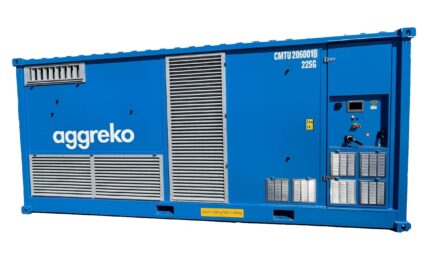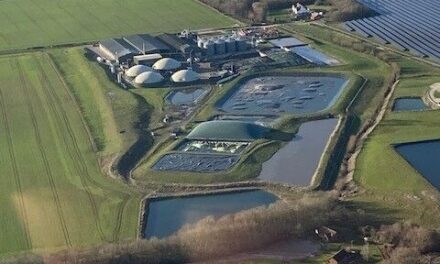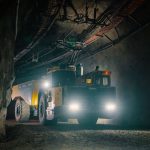
 Industrial Compliance finds out what the introduction of the new minimum energy performance standard means to motor users
Industrial Compliance finds out what the introduction of the new minimum energy performance standard means to motor users
The new European minimum energy performance standard (EU MEPS) came into force in January 2015, and this requires all motors between 7.5 and 375 kW to either meet IE3 efficiency levels or to meet IE2 efficiency levels if fitted with a variable-speed drive.
With the aim of improving the overall efficiency of the installed equipment across Europe, the regulation is supported by a new standard, EN50598, which benchmarks the efficiency ratings of electric motor drives.
EN50598-2 will widen the focus from that of a single component to the efficiency of the complete power drive system (PDS). The new efficiency classes (IES) provide a structure that allows the losses for a complete drive system to be compared. The median range is IES1 and systems which fall below the minimum value of IES1 are classed as IES0. More efficient systems, with values 20% above IES1, are identified as IES2.
EN 50598 takes into account the fact that energy efficiency is not just a cost factor. It is also key to achieving European climate targets which is why it now defines requirements for drive systems used in electrically powered machines based on the Energy related Products (ErP) directive of the EU.
This new standard should help end users to more accurately gauge payback periods. Previously, the overall efficiency of speed-controlled motors was estimated using rough energy consumption figures. With verified efficiency curves, the payback period for a motor/drive combination can now be calculated more realistically.
ABB says that the regulations do not require IE2 motors already in use to be decommissioned and replaced, as there is no requirement under the pending changes to EU MEPS that prevents the continued use of installed IE2 motors.
Existing end user stock of IE2 motors can still be used but any new stock brought into the UK market after this date must be fitted with a variable-speed drive to comply with the new efficiency standard. This will ensure EU MEPS compliance, and should also offer more accurate and reliable motor.
While the energy saving benefits of variable-speed drives (VSDs) are well documented, the productivity improvements that can be achieved by many other less publicised features are not so common.
Pre-installed macros for specific applications, such as pumps and fans, make setup straight forward, wiring error protection shows a fault if the power cable is inadvertently connected to the incorrect terminals and intelligent control panels allow users to interact with the drive simply. All of these features which are now commonplace in VSDs help ensure safe and reliable motor control and gives better process control on almost any application and duty cycle.
“It is worth reinforcing that if an IE2 motor is already in the market then it can be installed and used without a variable-speed drive. It is only when new manufacturer stocks of IE2 motors are brought into the UK market that they have to be fitted with a variable-speed drive. The rating plate must show the year of manufacture. Information about the obligation to use a drive must be displayed on the motor and in its technical documentation,” explained Dave Hawley, ABB’s UK motors and generators general manager.
Hawley believes that a far better solution for the water industry is to move straight to IE3 motors. He said: “It makes far more energy and financial sense to buy IE3. Even though it is not compulsory, if you add a drive to this motor the energy savings will be massive. Given the focus in the water industry on controlling total expenditure (TOTEX), investing in greater overall efficiency and productivity of process critical assets like pumps is something that water utilities must be giving close attention.”
IE3 motor range
Bauer Gear Motor can already offer a complete range of IE3 motors, including all those between 0.75 kW and below 7.5 kW which meet the regulations due to come into force in January 2017. All of the motors manufactured by Bauer are at least IES1 ready and the company is able to provide assistance in equipment selection.
The exceptions according to the regulation (EC) 640/2009, namely brake motors and those operating in potentially explosive atmospheres, will retain their exempt status. However, Bauer has developed the S series of permanent magnet synchronous motors (PMSM) which offers variable-speed motors in efficiency class IE4 for use in explosion hazardous areas.
IE4 motor offering
Siemens UK and Ireland has recently launched the IE4 series of low-voltage Simotics motors which are said to offer up to 14% higher efficiency than the IE1 portfolio. Designed to DIN EN 50347 standard, the IE4 can replace existing IE1, IE2 or IE3 motors, and is suited to use in pump, fan and compressor applications, as well as many more industrial applications.
Commenting on the launch, Muhammad Haroon of Siemens UK & Ireland, said: “In view of the increasingly stringent energy saving standards, not only within the EU but globally, the launch of our IE4 series enables industrial plants to equip themselves for the future, while making substantial savings on energy. The Siemens IE4 range is great for retrofit applications as the shaft height stays the same and offers greater flexibility and can be used for line operation (DOL) as well as with a variable speed drive. It represents the development of our SIMOTICS 1LE platform and everything about the series, from the housing design to output, has all been designed to deliver the highest levels of efficiency and ease of application.”






